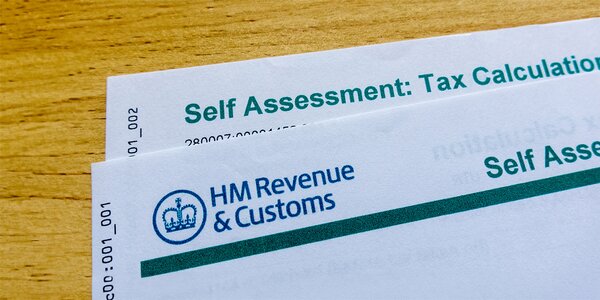Let’s get into the nitty gritty, shall we?
Filed your Self Assessment and discovered HMRC actually owes you money? It’s a lovely surprise that catches many people off-guard, especially if you’re used to writing cheques to the taxman every January.
If you submit your return sooner, your refund can be dealt with more quickly by HMRC, meaning you could receive your money back faster.
Self Assessment refunds happen more often than you’d think, particularly for people with variable income, those who’ve overpaid through PAYE, or anyone making payments on account that turned out to be too high.
I’ve helped hundreds of self-employed clients navigate refund situations, from simple overpayments to complex scenarios involving multiple income sources. Online submissions are often dealt with sooner than paper returns, so you may get your refund faster if you file electronically. Let me show you exactly when you’re entitled to refunds and how to manage your tax position to avoid overpaying in future.
What Is a Self Assessment Tax Refund?
A Self Assessment tax refund happens when the total tax you’ve paid during the year exceeds what you actually owe based on your final tax calculation. HM Revenue is responsible for processing and issuing refunds when you have overpaid. It’s HMRC’s way of returning money they’ve overcollected from you.
This is different from employed people getting automatic refunds through P800 calculations. With Self Assessment, the refund comes directly from your annual return calculation, and you usually need to actively claim it.
The most common source is overpaid payments on account - the advance payments HMRC requires if you owe more than £1,000 in previous years. These payments are estimates based on last year’s tax bill, but your actual liability might be lower.
I see this frequently with clients whose income dropped during the year, or who had higher expenses than the previous year. The payments on account stay the same, but the actual tax owed decreases, creating refunds. Any overpaid tax will be repaid to you after your return is processed.

Common Scenarios That Create Self Assessment Refunds
Understanding when refunds typically occur helps you anticipate them and plan your cash flow accordingly. Some scenarios almost guarantee refunds, while others depend on specific circumstances.
Overpaid payments on account: If your tax bill is significantly lower than the previous year, your payments on account (based on last year’s liability) will exceed what you actually owe. This is particularly common for variable income businesses.
PAYE overpayments: Self-employed people with employment income sometimes have too much tax deducted through PAYE. When combined with lower self-employment profits, this creates refunds. If you owe another amount to HMRC, such as a previous tax debt or tax credits overpayment, your refund may be used to pay that liability first, and only the rest will be returned to you.
Pension contribution relief: Higher-rate taxpayers can claim additional relief on pension contributions through Self Assessment. This often results in refunds, especially for substantial pension contributions.
Charitable donations and Gift Aid: Similar to pensions, higher-rate taxpayers can claim additional relief on charitable donations, which frequently creates or increases refunds.
Eligibility for Self Assessment Tax Refunds
To qualify for a Self Assessment tax refund, you must have overpaid tax during the relevant tax year either by paying too much tax on your income, or by making an error on your self assessment tax return that resulted in a higher assessment tax liability than necessary. Overpayments can also arise if you’ve made payments on account that exceed your actual tax bill, or if you’ve had too much tax deducted at source.
If you owe HMRC other amounts, such as a tax credits overpayment, HMRC may offset your refund against these debts before paying any remaining repayment to you. This means your refund could be reduced or used entirely to settle what you owe.
When claiming a tax refund, you’ll need to provide your unique taxpayer reference (UTR) and national insurance number. These details help prevent people claiming tax refunds fraudulently on your behalf. You can submit your tax return online or by post, but using the tax return online service is usually faster and allows you to track your claim’s progress. Make sure your personal details, including your postal address and bank account information, are up to date in your HMRC account to avoid delays in receiving your repayment or important correspondence.
If you realise you’ve paid too much tax after submitting your assessment tax return, you can file an amended tax return to correct the mistake. This can be done online or by contacting HMRC directly. When making a claim, it’s important to enclose evidence such as payslips, P60s, or invoices to support your case. Providing as much information and proof as possible helps HMRC deal with your claim efficiently and can lead to a repayment faster.

How Payments on Account Create Refund Opportunities
Payments on account are probably the biggest source of confusion and unexpected refunds in Self Assessment. Understanding how they work helps you predict when refunds might occur.
HMRC calculates your payments on account as 50% of last year’s tax bill, payable in January and July. HM Revenue and Customs uses these advance payments to ensure you pay the correct amount of tax throughout the year. But these are just estimates - your actual liability might be completely different.
Example scenario:
- Previous year’s tax bill: £8,000
- Payments on account: £4,000 in January + £4,000 in July = £8,000
- Current year’s actual tax bill: £5,000
- Refund due: £3,000
If you have overpaid, HMRC will pay the refund directly to your bank account.
This happens regularly with seasonal businesses, contractors between projects, or anyone whose income fluctuates significantly year-on-year.
The refund calculation includes everything you’ve paid during the year - PAYE tax deducted by employers, payments on account, and any balancing payments from previous years. HM Revenue and Customs (HMRC) manages the collection and refund of tax revenue, ensuring any overpayments are corrected.
Calculating Your Expected Self Assessment Refund
Before HMRC processes your return, you can estimate whether you’re due a refund by comparing what you’ve paid against what you’ll owe. One of HMRC's aims is to ensure taxpayers only pay what they owe and to prevent fraudulent refund claims. This helps with cash flow planning.
What you’ve paid includes:
- PAYE tax deducted from employment or pensions
- Both payments on account (January and July)
- Any balancing payment from last year’s return
- Tax credits claimed on dividend income
- Any other tax deducted at source
What you owe includes:
- Income tax on all sources (employment, self-employment, rental, etc.)
- Class 2 and Class 4 National Insurance contributions
- Capital gains tax on any disposals
- High income child benefit charges
- Student loan repayments through Self Assessment
The difference between these totals determines whether you owe money or are due a refund.

Managing Payments on Account to Reduce Future Refunds
While refunds feel nice, they essentially mean you’ve given HMRC an interest-free loan. Better cash flow management involves reducing payments on account when you know your liability will be lower.
Reducing payments on account: You can apply to reduce next year’s payments on account if you expect your tax bill to be lower. Form SA303 lets you do this, but you need reasonable grounds for the reduction. Any adjustments you make will affect your payments for the following tax year, so plan accordingly.
Valid reasons for reduction:
- Expecting lower profits due to reduced business activity
- Loss of employment or rental income
- Significant business expenses not incurred in previous years
- Retirement or semi-retirement reducing income
Be careful with reductions - if you underestimate your liability, you’ll face interest charges on the shortfall. Only reduce payments when you’re confident your tax bill will be genuinely lower.
I usually advise conservative reductions. Better to have a small refund than face unexpected interest charges because you reduced payments too aggressively.
Self Employment Income Variations and Refund Timing
Self-employed income rarely follows neat annual patterns, which creates interesting refund scenarios depending on when your income peaks and troughs occur.
Timing scenarios that create refunds:
- Strong first year followed by weaker second year
- Seasonal businesses with income concentrated in specific months
- Project-based work with gaps between contracts
- Business expenses concentrated in specific years (equipment purchases, etc.)
The timing of when you invoice and receive payment also affects refund potential. Income invoiced in March but received in April falls into different tax years, potentially creating refund opportunities.
If you realise you have overpaid tax after the deadline to amend your return has passed, you may need to submit a separate claim for overpayment relief to HMRC.
Contractors often experience this when projects end earlier than expected, or when there are gaps between contracts that weren’t anticipated when making payments on account.

Pension Contributions and Self Assessment Refunds
Pension contribution relief is a major source of Self Assessment refunds, particularly for higher-rate taxpayers who receive basic rate relief automatically but need to claim higher rate relief through their return. HM Revenue and Customs (HMRC) is responsible for processing pension relief claims and issuing any resulting refunds.
How pension relief creates refunds:
- Basic rate relief (20%) given automatically when you contribute
- Higher rate taxpayers can claim additional 20% through Self Assessment
- Additional rate taxpayers can claim extra 25% relief
- Relief claimed as a refund rather than reduced tax bill
This is particularly valuable for people whose income fluctuates. You might contribute to pensions during high-earning years and claim the relief through Self Assessment, often resulting in substantial refunds.
Charitable Donations and Gift Aid Extensions
Similar to pensions, charitable donations create Self Assessment refund opportunities for higher-rate taxpayers through Gift Aid extension relief.
The charity claims basic rate relief directly from HMRC, but you can claim the difference between basic and higher rates through Self Assessment. For substantial donations, this creates meaningful refunds.
Gift Aid refund calculation:
- Donation of £1,000 with Gift Aid becomes £1,250 to charity
- Higher rate taxpayer can claim £250 additional relief (20% of £1,250)
- Additional rate taxpayer can claim £312.50 (25% of £1,250)
After your claim, HMRC may send you a letter confirming your refund or requesting additional information.

What to Do While Waiting for Your Refund
Self Assessment refunds typically take 4-6 weeks to arrive after HMRC processes your return, but this can extend during busy periods. There are productive ways to use this waiting time.
While waiting:
- Plan how to use the refund (debt reduction, pension contributions, business investment)
- Consider whether to reduce next year’s payments on account
- Review your record-keeping systems for next year
- Plan quarterly financial reviews to spot refund opportunities earlier
If you need to contact HMRC about your refund, always refer to your most recent correspondence with them. When sending documents or claims by mail, it is advisable to use the post office and keep proof of posting. Including a copy of any recent correspondence with HMRC can help them process your inquiry more efficiently.
Complex Refund Situations and Professional Help
Some Self Assessment situations create complex refund calculations that benefit from professional review, particularly when multiple factors interact.
Complex scenarios:
- Multiple income sources with varying tax treatments
- Capital gains interacting with income tax bands
- Overseas income with foreign tax credit claims
- Partnership profits with varying profit shares
- Previous year adjustments affecting current year calculations
These situations often create unexpected refund opportunities that aren’t obvious from simple calculations. Professional review can identify refund claims you might miss. If you need to make a later query about a previous tax year, such as claiming a tax refund or overpayment relief after the amendment deadline, a professional can help you prepare the necessary documentation for HMRC.
The cost of professional advice often pays for itself through optimised refund claims and better tax planning for future years.

Final Thoughts
Self Assessment refunds provide welcome cash injections, but they also indicate opportunities to improve your tax planning and cash flow management. Understanding when refunds occur helps you anticipate them and plan accordingly.
The key is balancing refund opportunities with efficient cash flow - you don't want to massively overpay tax, but you also don't want to underpay and face interest charges. Our free self-assessment app helps you track your tax position throughout the year and optimise your payments to avoid unnecessary overpayments.











